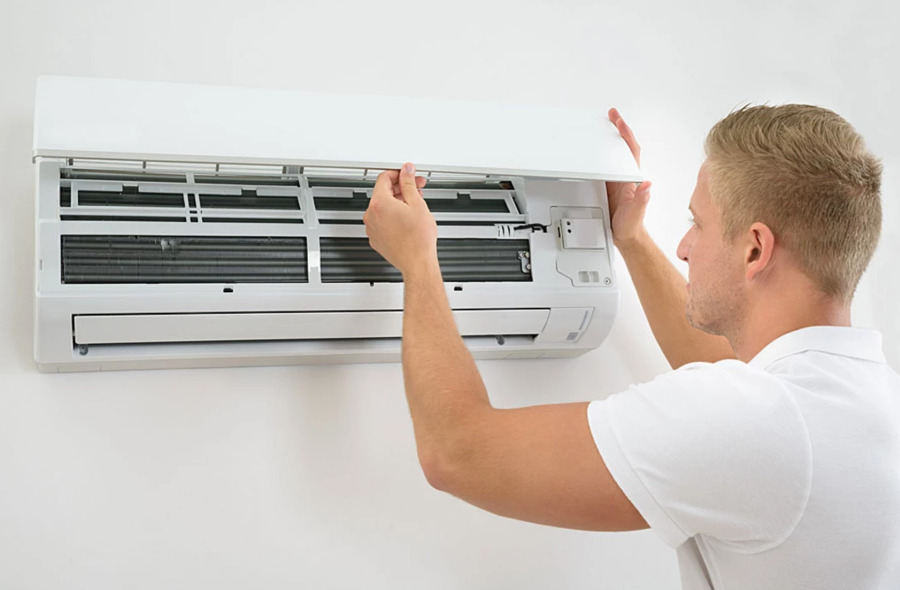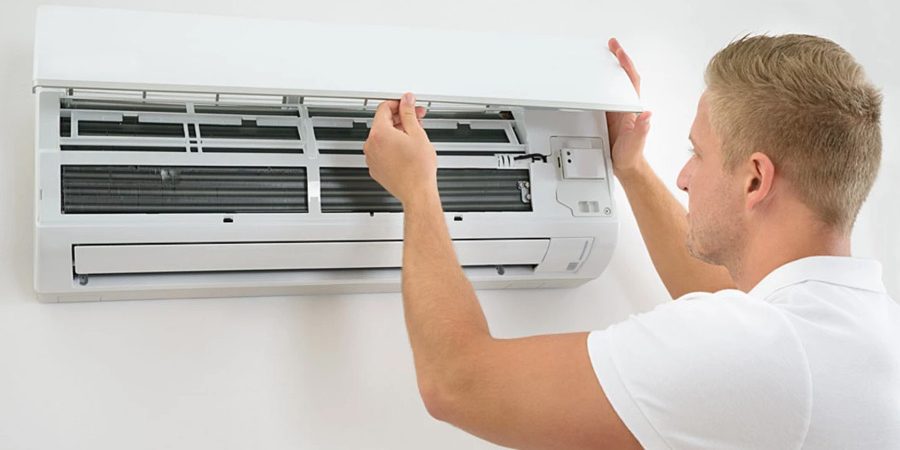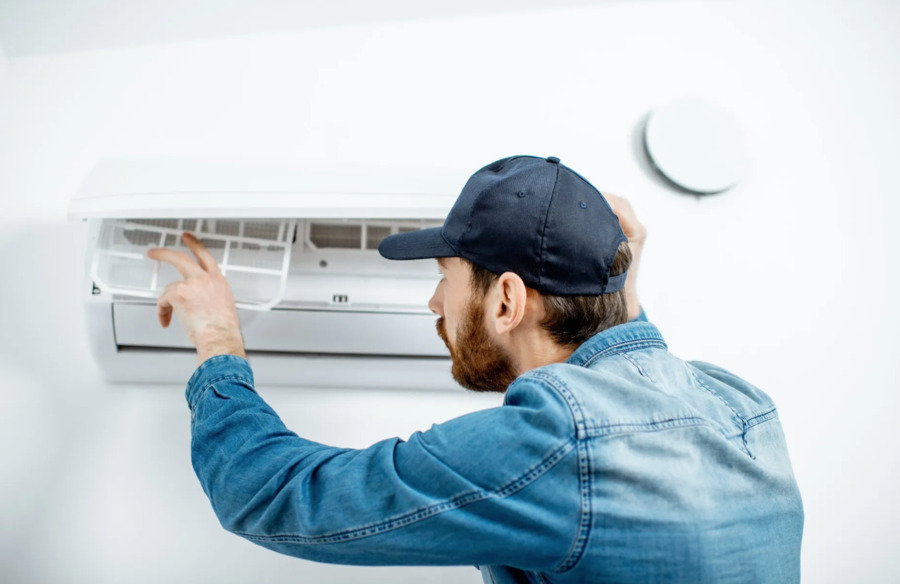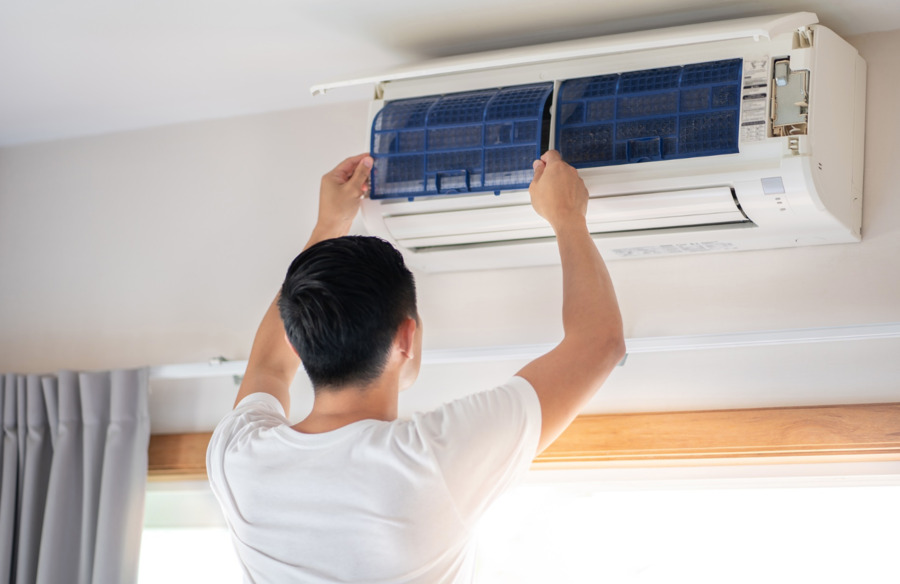Air conditioning is crucial for maintaining comfort in various settings, from homes and offices to industrial spaces, especially in regions experiencing extreme temperatures. This article delves into the different types of air conditioners, focusing on their components, how they operate, their benefits and drawbacks, and emphasizes the importance of AC maintenance to ensure efficiency and longevity.
Page Content
What is an Air Conditioner?
An air conditioner is a device designed to modify the condition of air (heating, cooling, and sometimes humidity) to more comfortable levels. Unlike simple air cooling devices, an air conditioner makes environments genuinely comfortable during hot or humid seasons by removing heat from indoor air and transferring it outside, thereby cooling the indoor area.
Detailed Components of Compression Air Conditioners
Compression air conditioners, which work on the refrigeration cycle, include several critical components that ensure their effective operation:
As the core of the air conditioning system, the compressor’s main function is to compress the refrigerant, which increases the refrigerant’s temperature. As it circulates through the system, the compressed, hot refrigerant releases its heat and condenses into a liquid.
Condenser
Located typically on the outside part of an air conditioner, the condenser plays a crucial role in heat expulsion. The hot refrigerant vapor is cooled down here, condensing it into a high-pressure liquid that travels to the evaporator.
Evaporator
The evaporator is situated inside the indoor handling unit and is crucial for cooling the indoor air. As the cold low-pressure refrigerant is released into the evaporator, it absorbs heat from the indoor air and evaporates, resulting in cooler air which is then circulated back into the room.
Thermostatic Expansion Valve (TXV)
The TXV is a device that controls the amount of refrigerant released into the evaporator, maintaining the efficiency of the cooling process. It adjusts the flow based on the immediate cooling needs of the system.
Fans
Fans in an air conditioning system ensure proper air flow through the condenser and evaporator coils, thus enhancing the efficiency of the system. They help in circulating the conditioned air throughout the indoor spaces and in expelling the heated air through the condenser outdoors.
Operation of Evaporative Air Conditioners
Evaporative air conditioners, also known as swamp coolers, provide cooling through water evaporation, which is a different mechanism compared to compression air conditioners:
Casing and Tray
The casing houses all the critical components of the evaporative cooler, including the fan, pads, and water distribution system. The tray holds the water used in the evaporation process.
Evaporative Pads
These pads are made from materials that absorb and hold water. As air passes through the wet pads, it evaporates the water, cooling and adding humidity to the air in dry climates.
Electric Motor and Fan
The motor drives the fan that blows air through the evaporative pads. The fan circulates the now-cooled air throughout the building.
Water Pump and Valves
The water pump circulates water from the tray to the pads to keep them saturated. Valves control the water flow into the cooler and maintain adequate water levels, ensuring efficient operation.
Principles and Comparison of Air Conditioners
Compression Type Air Conditioner
This type uses a chemical refrigerant and energy to remove heat from the air. The main advantages include effective cooling in varied climates and better humidity control, making them ideal for humid regions. However, they tend to consume more energy and require more complex maintenance.
Evaporative Type Air Conditioner
These are eco-friendlier as they use water for cooling and do not involve chemical refrigerants. They are most effective in dry climates and are energy efficient. Their limitations include reduced effectiveness in humid conditions and the need for regular maintenance to prevent mold and odor.
Advantages and Disadvantages
Compression Air Conditioners
Advantages: Excellent cooling and humidity control; effective in various climates.
Disadvantages: Higher energy consumption requires regular and often complex maintenance.
Evaporative Air Conditioners
Advantages: Lower running costs; environmentally friendly.
Disadvantages: Not effective in humid climates; frequent maintenance needed to ensure health and efficiency.
Importance of Regular Maintenance
Maintaining air conditioners is crucial not only for ensuring optimal performance but also for extending their lifespan and preventing breakdowns. Regular maintenance includes cleaning filters, checking refrigerant levels, inspecting electrical components, and ensuring that all parts are in good working condition.
Air Conditioning Services in Dubai
In the challenging climate of Dubai, where air conditioning is not just a luxury but a necessity, and the best home maintenance company that offers reliable installation, timely maintenance, and efficient service plans tailored to all types of air conditioning systems. Their expertise ensures that your unit operates smoothly, providing comfort without unnecessary interruptions.
In conclusion, understanding the different types of air conditioning systems and their operational principles can help users make informed decisions about their cooling needs. With appropriate maintenance, facilitated by professional services, air conditioners can provide effective and efficient service for years to come.




